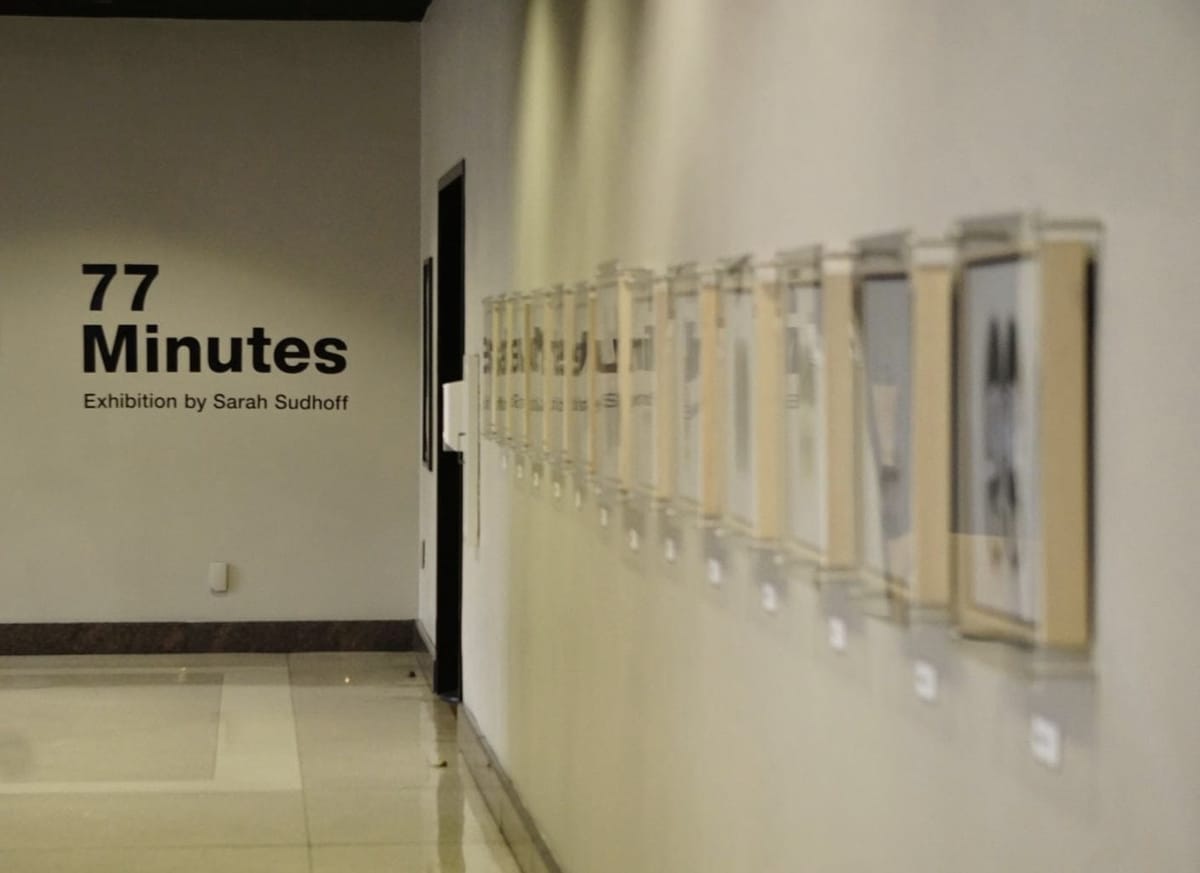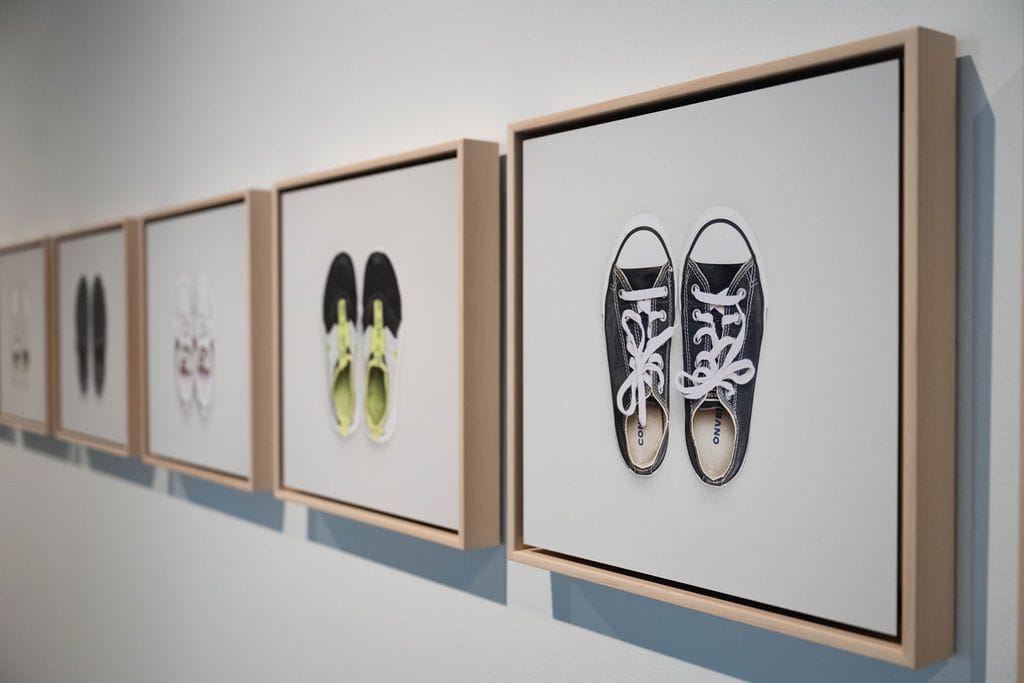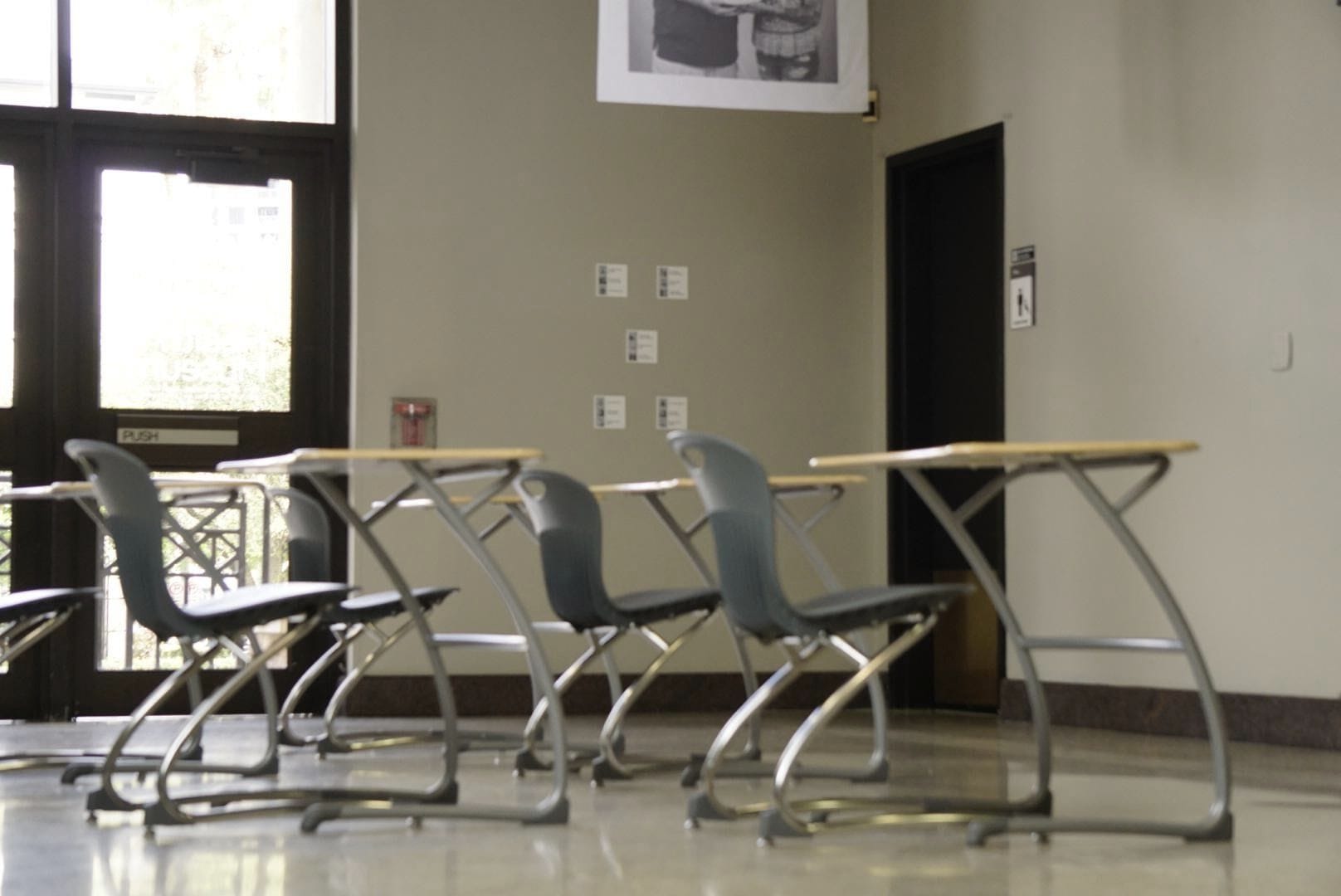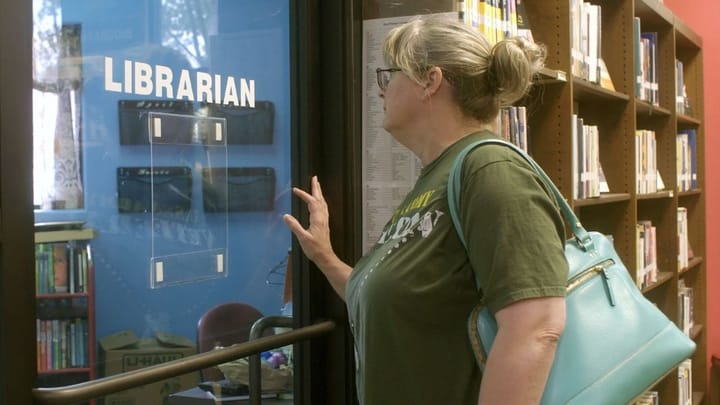Uvalde And The Weight Of 77 Minutes
Why a health museum for this exhibit? Because it lets the work be seen as part of a public health crisis.

It was surprisingly busy for a Tuesday at The Health Museum in Houston. Toward the end of the school year, districts try to cram in as many field trips as they can to make up for missed opportunities earlier in the semester. In the main hall, children’s voices echoed off the walls as their bodies bounced off the oversized organs and other hands-on exhibits.
When I walked in, it sounded like laughter. As I left after spending time in the “77 Minutes” exhibit, it reminded me of screaming.
“When we first put it up here, I found myself like getting very emotional thinking about it,” said Rose Tylinski, Healing Arts Program Manager, as she showed me around. “Now, I feel like I’ve kind of broken that, so I’m able to kind of speak about it.”
“77 Minutes” is the latest installation from Houston-based artist Sarah Sudhoff, who previously worked with the Health Museum on their Dyslexic Brain exhibit. She’s always had a penchant for weaving the scientific into her art, but nothing I’ve seen of hers hits as hard as this latest creation.

On May 24, 2022, a gunman entered Robb Elementary School in Uvalde, Texas and killed 19 students and two teachers, and injuring 17 others. The attack lasted 77 minutes before the shooter, Salvador Ramos, was shot by police. For months afterwards, there were hard questions about police response, school safety, and gun control. It even looked like it might tip the race for governor to Democratic challenger Beto O’Rourke after he confronted Greg Abbott ts a political event. The deadly entropy of Texas politics re-asserted itself quickly, though, and it seemed like Robb Elementary was ready to be filed away with the rest of the gun-based atrocities in America.
But maybe not. Sudhoff’s work is incredibly powerful. The core of the exhibit is a series of portraits of children’s shoes and one of the vest teacher Eva Mireles wore when she was shot. Just shoes, achingly small, scuffed and worn from tumbles in the yard or neatly tied with the mechanical precision of people still proud of a newly learned skill.
Framed in pine like Old West coffins, the portraits are simple, top-down views at shoes, as if they are being looked at by their former owners. When clothing is recovered from a murder scene, the police give it back cleaned of blood. Tylinski points to spots on some of the shoes, a worn away C in a pair of Converse or other missing bits. Were they wiped away with solvents from the blood, or are they the last vestiges of play? It’s impossible to tell.

“It’s a little morbid once you know what it is and think about it; it’s kind of scary because of that,” said Tylinski. “Children come up and look at them and recognize names or the kind of shoes they have. It connects them to what happened.”
Past the portraits is another gallery of hanging banners. The material is sheer and semi-translucent, making the people on them look ethereal and ghostly. Once again, it’s shoes, but this time held by the grieving families. Most of them wear custom clothing honoring their kids. Their faces are sad and marked by the tragedy, but also hostile. Floating above a set of empty school desks in front of a wall clock counting up to 77 minutes, they seem like judging angels asking visitors what we’re going to do about this.
Why a health museum for this exhibit? Because it lets the work be seen as part of a public health crisis. The opening of the exhibit has an interactive touch screen reframing the photographs as scientific evidence of America’s continued epidemic of gun violence.
The same year that Robb Elementary became an abattoir, Johns Hopkins University published a study showing that gun violence was now the leading cause of death in children. When school shootings are perpetuated by attackers 18 or younger like Ramos, 76 percent of the time they get their guns from their homes. Much of the time, these weapons are stored in unlocked places and loaded, adding to the possibility of accidents or use in attacks.
“77 Minutes” lays this out in a simple progression: cause to symptom to call for action. Since 1996, the American government has made it very difficult to study gun violence as a public health phenomenon. Instead, the matter has mostly remained in the “political,” a battle between ideologies that keeps the matter abstract instead of dealing with the growing pile of bloodstained little shoes.
“We got it here so we can look at what it does to a community and to a society when these tragic events happen,” said Tylinski.

Leaving the exhibit was hard. The weight of “77 Minutes” pushed down on me, and I remembered all the times my own child’s school went on lockdown for a potential threat. It’s become as common as the flu, with just as many people ignoring the solutions while people suffer.
Sudhoff and the Health Museum at least make us stand in the empty shoes of the people this ballistic flu takes. Hopefully, it will make at least a few people take a step toward a safer world.
77 Minutes runs at the Health Museum in Houston through September



Comments ()